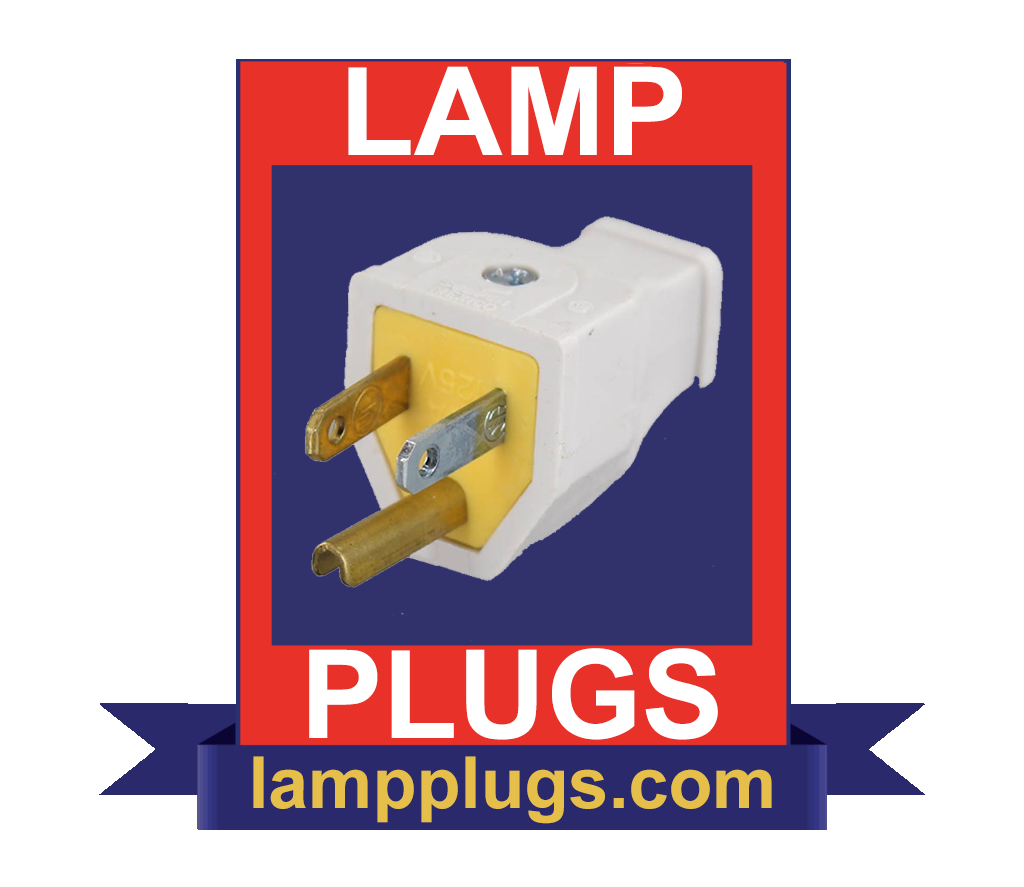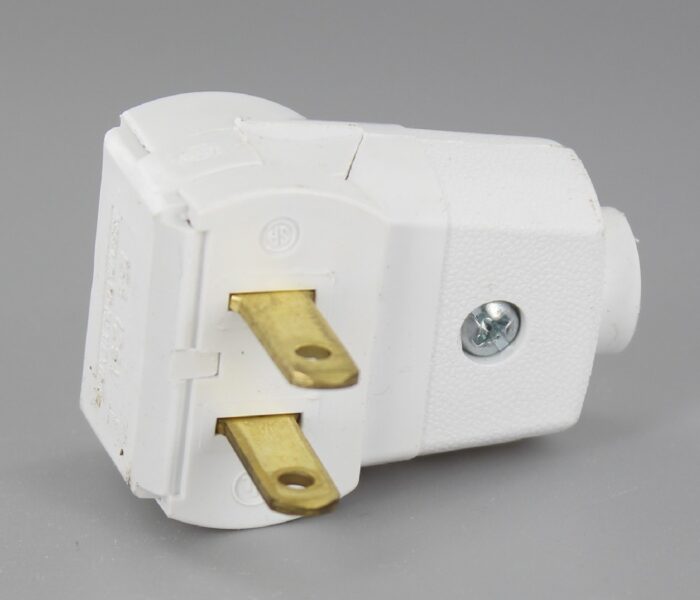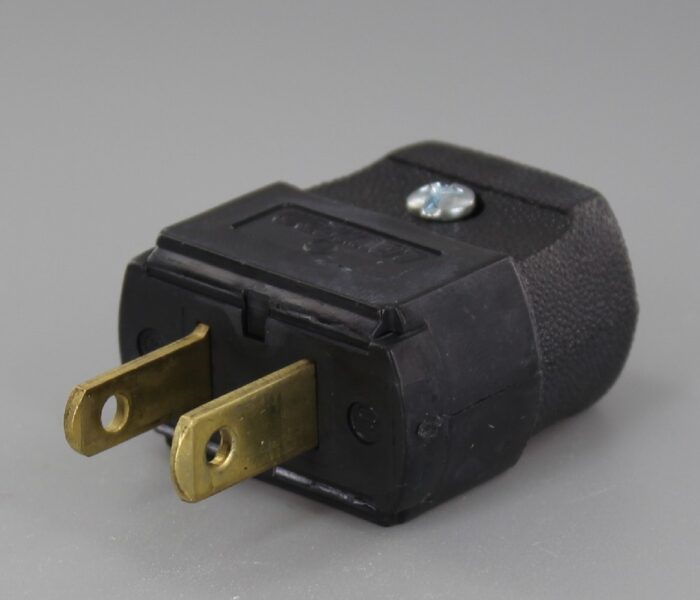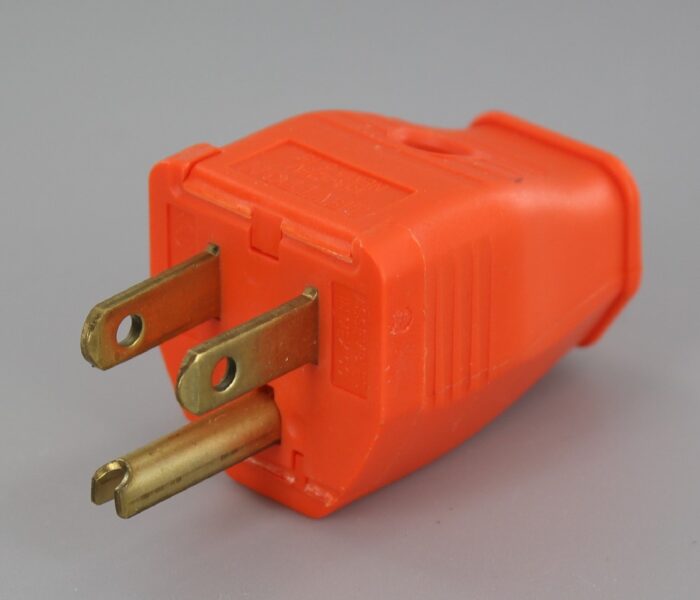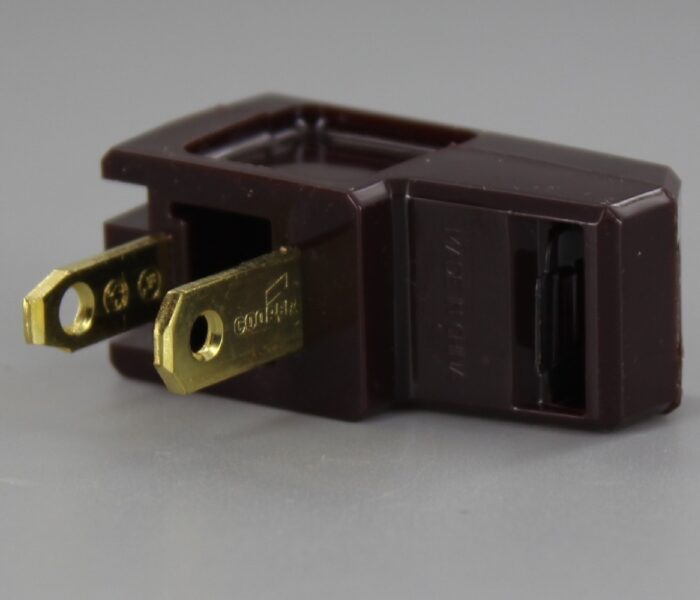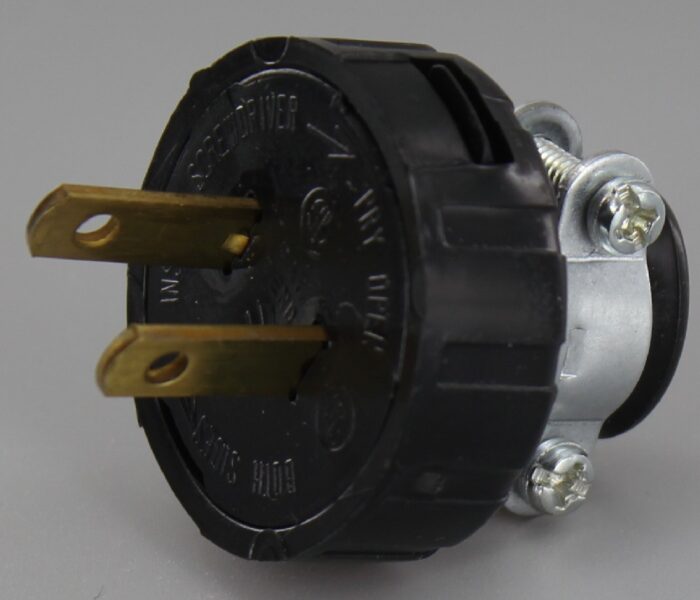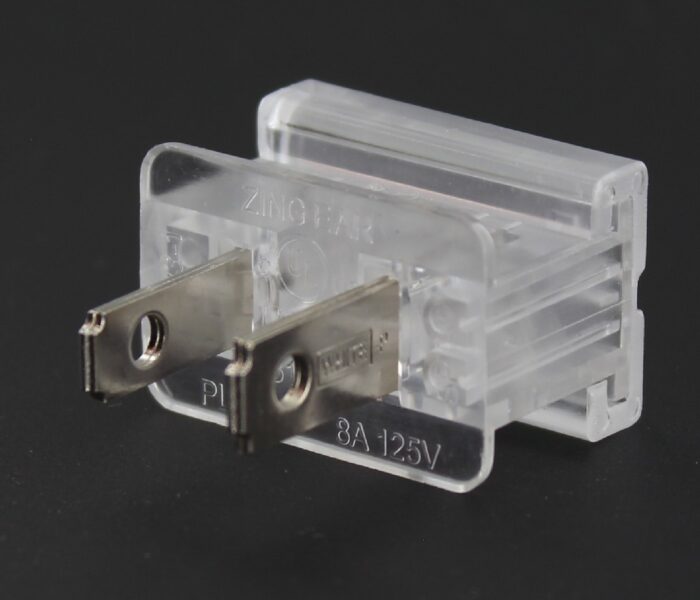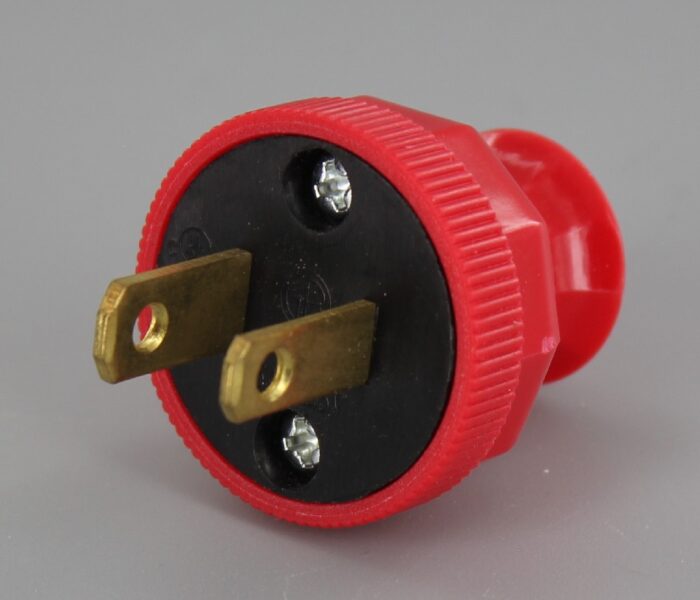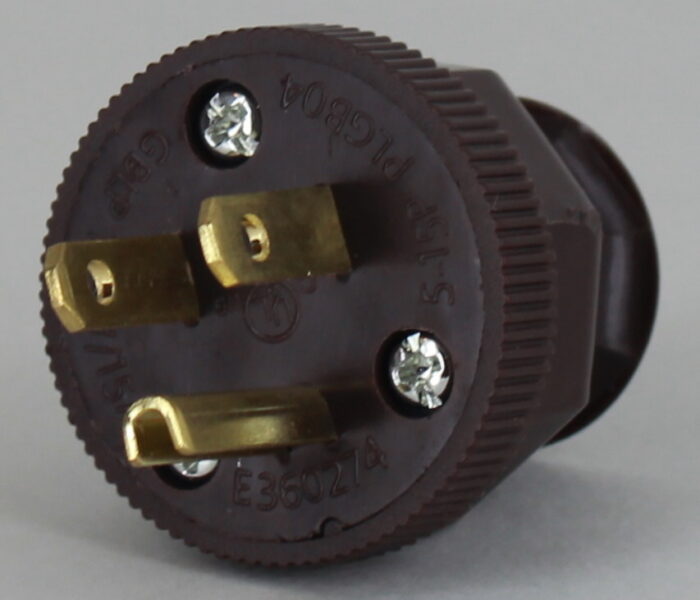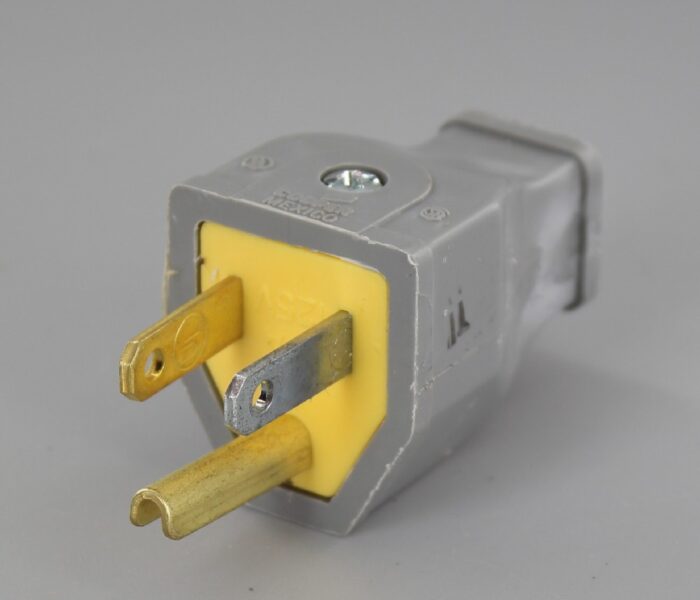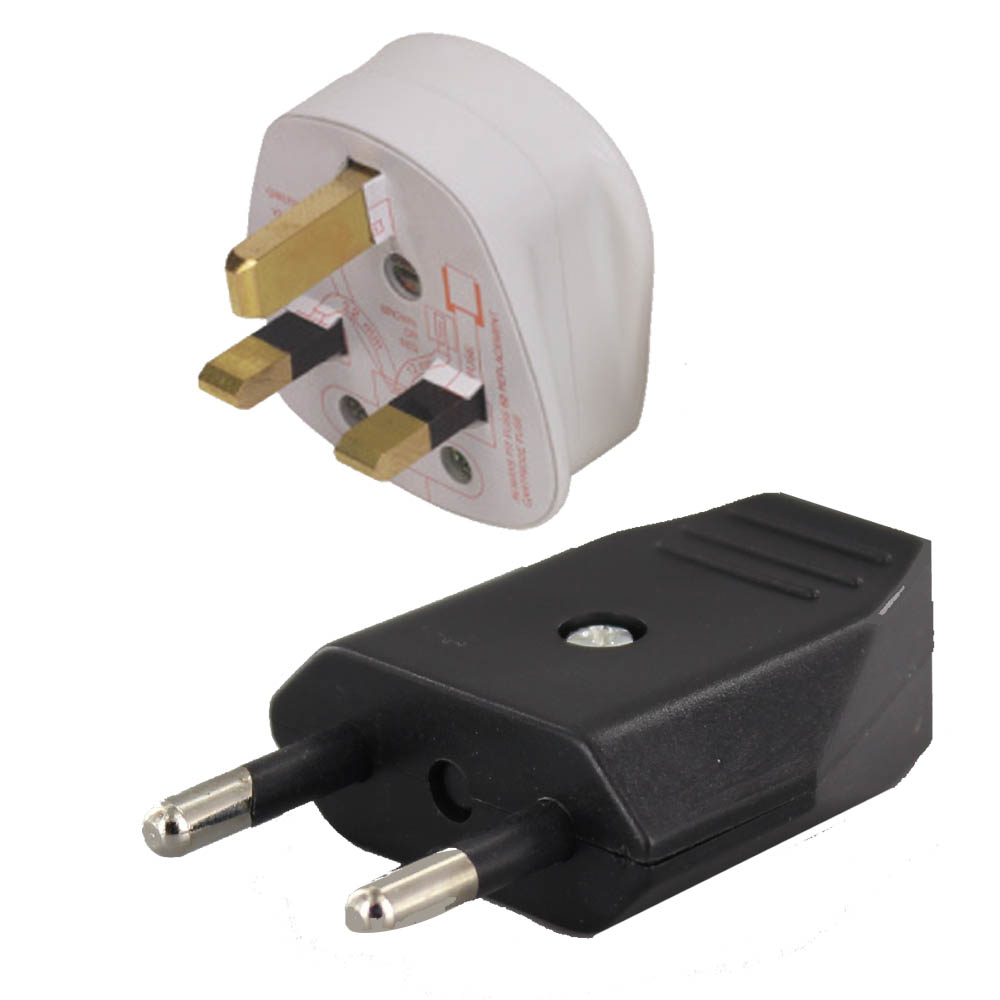APPLIANCE PLUGS – MALE LAMP CONNECTORS
WHAT IS A LAMP PLUG?
Lamp plugs allow an electrical current to flow between a lamp and the home or business it serves. Generally found at the end of cords, plugs come in multiple configurations and can be used in any modern building. Because plugs are occasionally damaged due to accidents or rough use, the lighting parts are routinely replaced during the refurbishment of an electric lamp. Along with light sockets and lamp cord, electric plugs are also used to convert older gas and oil lamps for use as electrical lighting devices.
HISTORY OF LAMP PLUGS
EARLY HISTORY
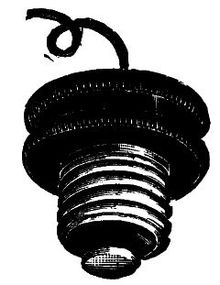
Although Edison invented the first functional electric light bulb in 1879, more than 20 years would pass before his revolutionary device was practical enough to be embraced by the mass consuming public.
In fact, early electrical systems were exorbitantly expensive to install and to maintain, as well as subject to frustrating service interruptions and frightening power surges. As a consequence, the market for electric light during the 1880s was extremely small, and the number of “bulb receptacles” or sockets produced was minuscule.
When electricity was first introduced into houses in the 1880’s, it was primarily used for lighting. One common approach for other appliances (such as vacuum cleaners, electric fans, smoothing irons and curling tong heaters) was to connect to light bulb sockets using lamp holder plugs. However, in Britain, there were recognizable two pin plugs and wall sockets appearing on the market as early as 1885.
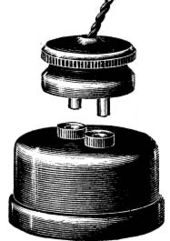
BRITISH ORIGINS
As electricity became a common method of operating labor-saving appliances, a safe means of connection to the electric system other than using a light socket was needed. Thomas Tayler Smith of London, England received a British patent in 1882 for an “Electric-Circuit Connection” to “enable the electric conductors conveying the current to one or more lamps, or along a flexible cord, to be rapidly and safely brought into connection with the line or main wires”. Smith subsequently received a US patent for the same device in 1885.
According to British Author John Mellanby there were British patents for plug and sockets granted to T.T. Smith in 1883 (No. 3883) and W. B. Sayers & G. Hookham in 1884. Mellanby also writes that there were two-pin designs by 1885, one of which appears in the (British) General Electric Company Ltd. catalog of 1889.
Gustav Binswanger, a German immigrant who founded the (British) General Electric Company Ltd, obtained a patent in 1895 for a plug and socket using a co-axial contact system.
HUBBELL’S INVENTIONS
Several early American electrical plug and socket arrangements were invented by Harvey Hubbell.

On 26 February 1903 he filed two patent applications featuring 2-pin plugs and adaptors for using his plugs with existing designs of lamp sockets and wall receptacles.

Hubbell’s first plug design had two round pins which differed from those already in use in Europe in that the tips of the pins had annular detents similar to those of present-day jack plugs to positively retain a plug in its socket.
In one patent, a plug was used with a socket which screwed into a lampholder (like the early lampholder plugs).
In the other patent, the same type of plug was used with various three-way adaptors that could be connected to lampholders or “a receptacle of any ordinary type”.
Hubbell evidently soon found the round pin design unsatisfactory as a subsequent patent filed on May 27, 1904 shows lampholder adaptors similar to those of his first patent for use with plugs having tandem flat pins.
In 1904 at the World’s Fair in St. Louis scientists and engineers from around the world realized for the first time that standards for electrotechnology were urgently needed.
The exhibits that occupied the Palace of Electricity not only required electricity of numerous different voltages, but also either direct current or 1-, 2-, or 3-phase alternating current, with many different frequencies and variations of connectors and plugs.
Electricity was the new thing and it generated an increased transnational flow of ideas and products.
Scientists realized that they needed common metrics, terminology and symbols to build on each other’s research, and to facilitate the development and roll-out of innovations.
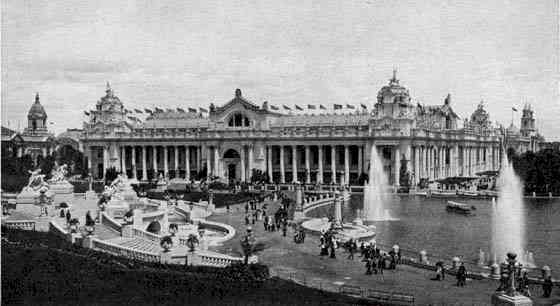
Hubbell’s catalog of 1906 includes various three-way adaptors similar to those shown in the US patent, but modified for use with the tandem flat pin plugs. The Chapman receptacle must have been in general use at the time, as it was the only type of non-lampholder receptacle for which adaptors were supplied.
The 1906 catalog says of the Chapman adaptor: “The device avoids fastening the cords together as is necessary with the ordinary Chapman plug when used for more than one purpose.” This suggests that Hubbell’s original invention was prompted by his observation of the problem that arose with the use of this sort of receptacle and plug. Gradually wall sockets were developed to supplement those that screwed into lampholders.
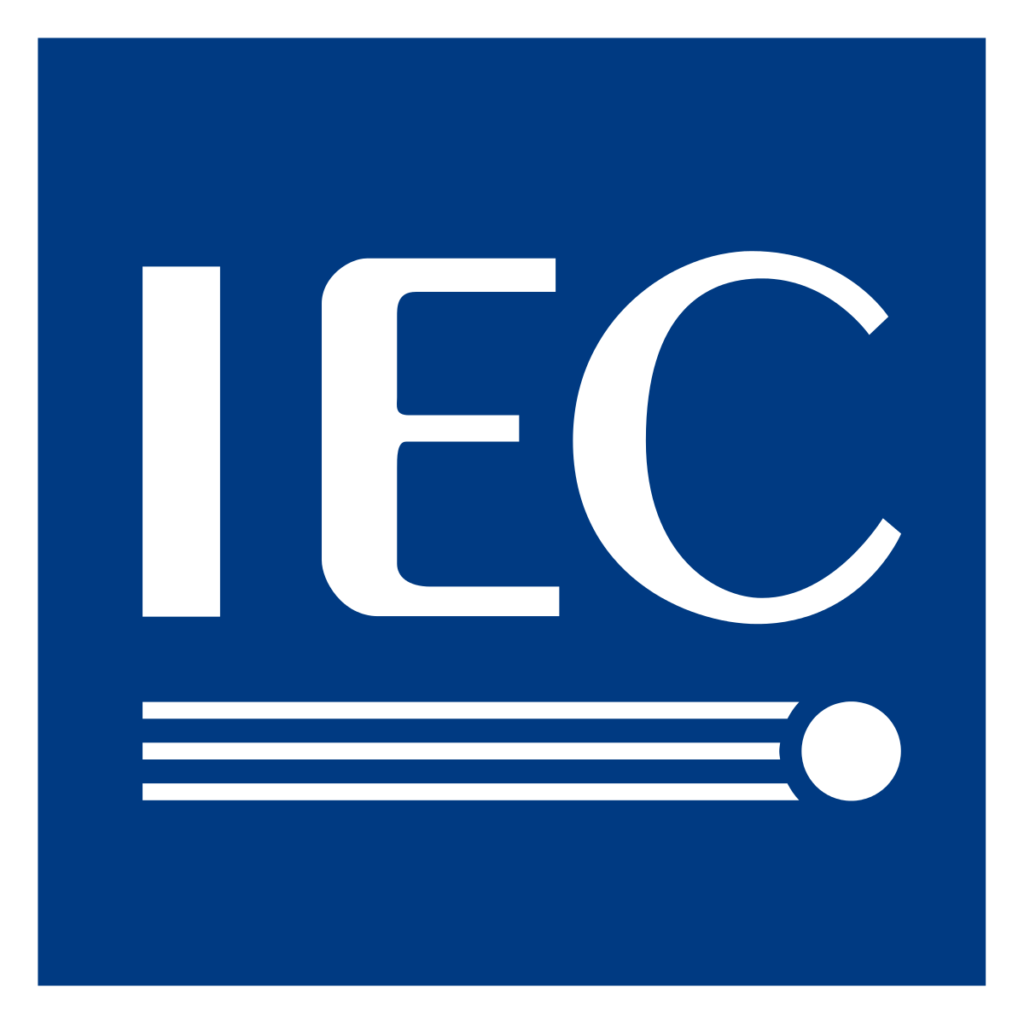
The International Electrotechnical Commission (IEC) was founded in 1906 to provide a platform to scientists so that they could build on each other’s research and stimulate the development and commercialization of electrical technology and machinery.
In 1912 Hubbell rotated his tandem pins by 90 degrees to arrive at the parallel flat pin configuration still widely used today.
A feature common to all of Hubbell’s patented designs is the provision of detents to retain a plug in its socket. This would have been a desirable feature in the days before wall receptacles became widespread and, for many consumers, the only source of electricity was an electric light socket.
HUBBELL VS. OTHER AMERICAN MANUFACTURERS
Despite Hubbel’s objections, other manufacturers adopted the Hubbell pattern, omitting Hubbell’s detents, and by 1915 the use of Hubbell’s configuration was widespread. In 1919 Hubbell unsuccessfully attempted to get an injunction to prevent other manufacturers from making receptacles and plugs to the dimensions used by Hubbell.
The report of the court proceedings includes a comprehensive review of the development of the art in the US prior to 1919, based on evidence presented to the Court. Separable plugs had been available for more than a decade prior to Hubbell’s 1904 design.
Plugs with parallel flat pins, such as the “Fort Wayne” design were in common use by 1886, and flush receptacles, such as the “Bryant Electrical Company” design, by 1902.

Hubbell had introduced its own parallel flat pin configuration in 1912. In 1915 there were from 15 to 20 different types of blades and from 15 to 30 different types of receptacles. The line of each was not interchangeable with competing lines.
The existence of both “tandem” and parallel pin configurations had led to the introduction in 1914 of some receptacles having both configurations of slots and others having “T” slots.
By 1915, Hubbell had sold about 13 million receptacles and plug bases/caps with tandem slots/pins, and about 1.25 million with parallel slots/pins, most of which were then still in active use, meaning that Hubbell’s configurations were by far the most widely used.
Following the lead set by the lamp manufacturers in standardizing lamp bases, a conference of the plug and receptacle manufacturers, including Hubbell, was arranged with a view to agreeing a standard configuration. It was a time of great expansion in the use of electrical appliances such as fans, heaters, and cookers, as well as portable devices such as hair curlers and irons, and the public wanted interchangeability.
Hubbell’s parallel pin configuration was preferred, but Hubbell rebelled against standardization, and refused to agree, asserting that it had common law rights in the dimensions of its line. The other conference members pressed on regardless, and agreed to standardize on Hubbell’s parallel flat pin configuration and dimensions. Hubbell’s court action only served to confirm the legality of their activities, to the great benefit of the US public.
EARTHED PLUGS
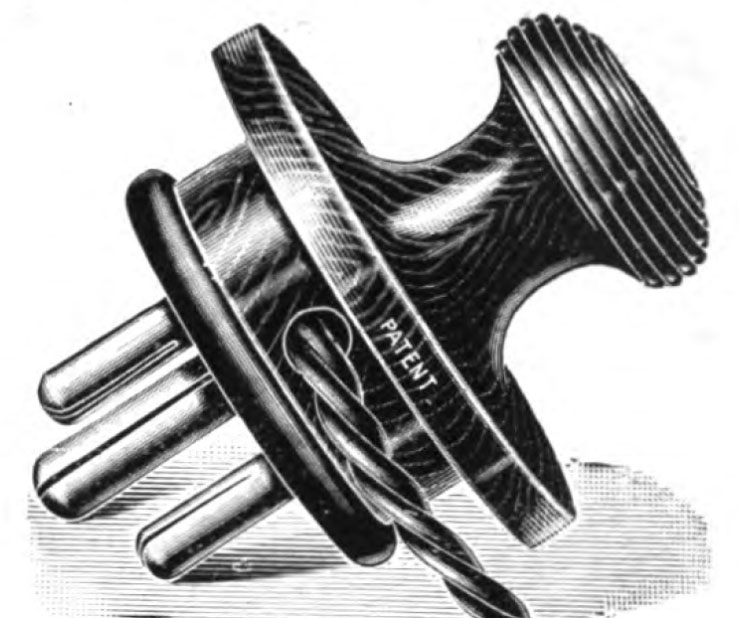
In Britain, a 1911 book dealing with the electrical products of A. P. Lundberg & Sons of London describes the “Tripin” earthed plug available in 2.5 amp and 5 amp models. The pin configuration of the “Tripin” appears virtually identical to modern BS 546 plugs.
In her 1914 book Electric cooking, heating, cleaning, etc. Maud Lucas Lancaster mentions an earthed iron-clad plug and socket by the English firm of Reyrolle and Co.
The earliest American patent application for an earthed plug appears to be 11 January 1915 by George P. Knapp, on behalf of the Harvey Hubbell company.
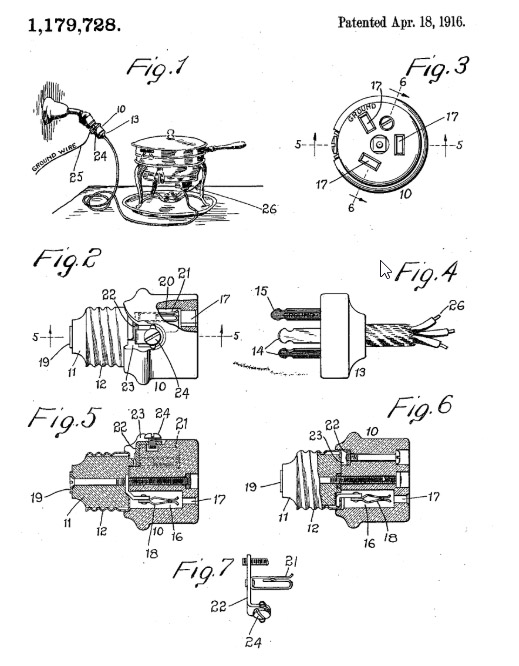
This patent covers the use of an earthing pin which extends further than the other two contacts to ensure that it is engaged first.
Knapp’s design was obsoleted in the US before the modern National Electrical Manufacturers Association (NEMA) designations, but is still used in some other countries including China, Argentina and Australia.
The configuration of the socket was not operable with existing two-contact unearthed plugs. Other earthed sockets that are widely used in the US today are operable with unearthed plugs. It is sometimes claimed that the modern American version of the earthed plug, was invented by Philip F. Labre who was issued a US patent for an earthed socket and plug in 1928.
However, Labre’s design is no more similar to the modern version than Knapp’s earlier design.
The German Schuko-system plug is believed to date from 1925 and is attributed to Albert Büttner. As the need for safer installations became apparent, earthed three-contact systems were made mandatory in most industrial countries.
Proliferation
During the first fifty years of commercial use of electric power, standards developed rapidly based on growing experience. Technical, safety, and economic factors influenced the development of all wiring devices and numerous varieties were invented. Gradually the desire for trade eliminated some standards that had been used in only a few countries.
Former colonies may retain the standards of the colonizing country. Sometimes offshore industrial plants or overseas military bases use the wiring practices of their controlling country instead of the surrounding region.
Some countries have multiple voltages, frequencies and plug designs in use, which can create inconvenience and safety hazards. Hotels and airports may maintain sockets of foreign standards for the convenience of travelers.
Polarized Outlets and Plugs
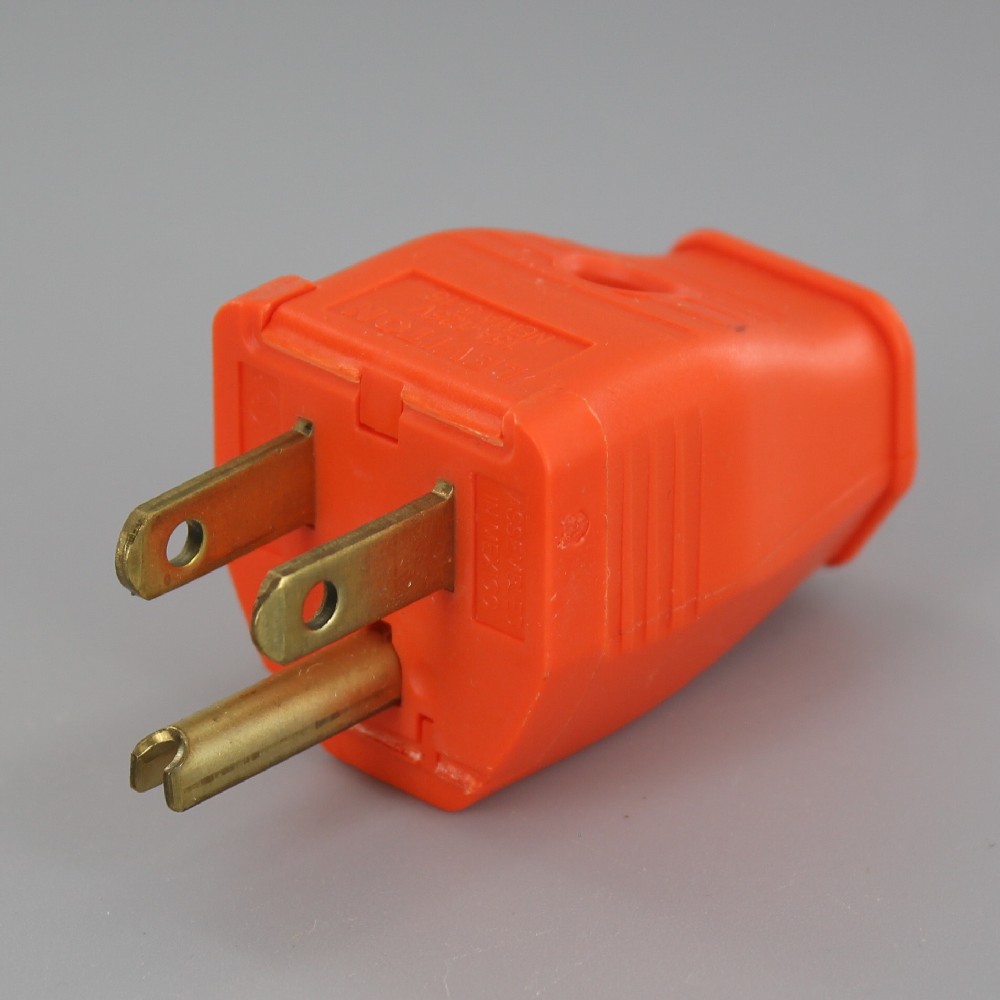
Although polarized outlets and plugs were introduced in the 1880’s, they were not popular at first and did not become standard until the mid-20th century. The earliest National Electric Code (NEC) that we can find that references polarized receptacles is the 1962 edition, which required outlets to be both grounding (3-prong) and polarized.
Polarized electrical cord plugs are designed so that they can only fit into a socket/outlet one way. One of the two vertical prongs is slightly taller than the other, with a corresponding tall and short slot in the outlet, which makes it impossible to insert the plug backwards, ensuring that the “hot” and “neutral” connections cannot be reversed.
Why Are Electrical Plugs Different in Europe?
The reason why the world is now stuck with no less than 15 different styles of plugs and wall outlets, is because many countries preferred to develop a plug of their own, instead of adopting the US standard. In one sense those countries were actually right, though: the wobbly American plugs and their uninsulated prongs are almost prehistoric in terms of design and they are notoriously unsafe.
For decades, the International Electrotechnical Commission (IEC) tried to develop a universal domestic power plug, but time and again political and economic issues threw a spanner in the works. In 1986, the IEC finally presented the universal standard plug (type N) to the world, but unfortunately the initial enthusiasm had dampened.
Thus, by the time travel and appliance portability were at the point where standardization made sense, electrically wired homes and electric appliances were widespread, and switching to new plugs and sockets was an expensive proposition.
It wasn’t until 2007 that Brazil became the first country in the world to adopt type N as its standard wall outlet and plug top. The establishment of type N as the sole standard was motivated by the urge to sort out the motley collection of plugs in use throughout the country.
For the foreseeable future we’re stuck with the hodgepodge of plugs and sockets that we have.
There are currently 15 types of electrical outlet plugs in use today, each of which has been assigned a letter by the US Department of Commerce International Trade Administration (ITA), starting with A and moving through the alphabet. These letters are completely arbitrary: they don’t actually mandate anything. If you want to see what different countries use, see below.
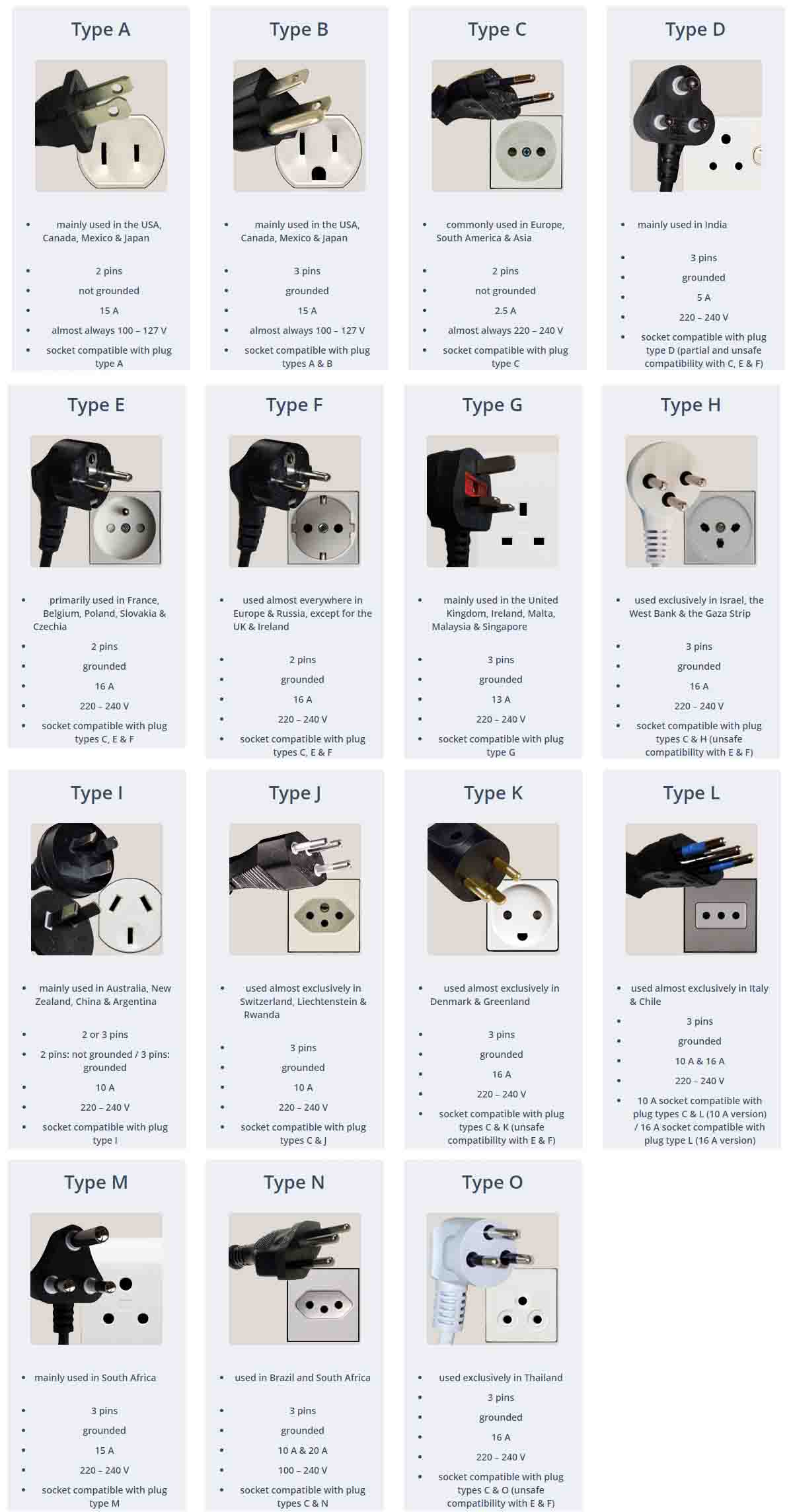
Furthermore, if you’re abroad, it’s not just the plug and socket that will be different, but possibly the voltage and frequency of household electricity, which differs from region to region.
How to Make Your Own Extension Cord
WARNING! Improper or incorrect wiring of an electrical device can cause bodily harm, and death. We recommend that you consult with a licensed electrician who is familiar with wiring.
Are you tired of having to connect multiple extension cords when performing a job that requires electricity and there is no outlet nearby? Not only can that get frustrating, but it can be dangerous as well. One way you can solve that issue is to simply make your own custom extension cord. Not only will it serve your purpose better, but it will actually be higher quality than one you can purchase at the hardware store. Here is how to make your own extension cord.
Step 1
Determine how long of an extension cord you will be needing. If you have a location where you typically perform your work, just measure the length and add a few feet for slack. Typically, the extension cord shouldn’t be longer than 24 feet.
Step 2
Purchase the 16/3 SJT wire, female outlet, and male plug that best suit your needs and design.

Step 3
Next, using wire strippers, strip the wire pulling the outer sheath apart to reveal the individual wires inside. Expose about an inch and a half of the inside wires.
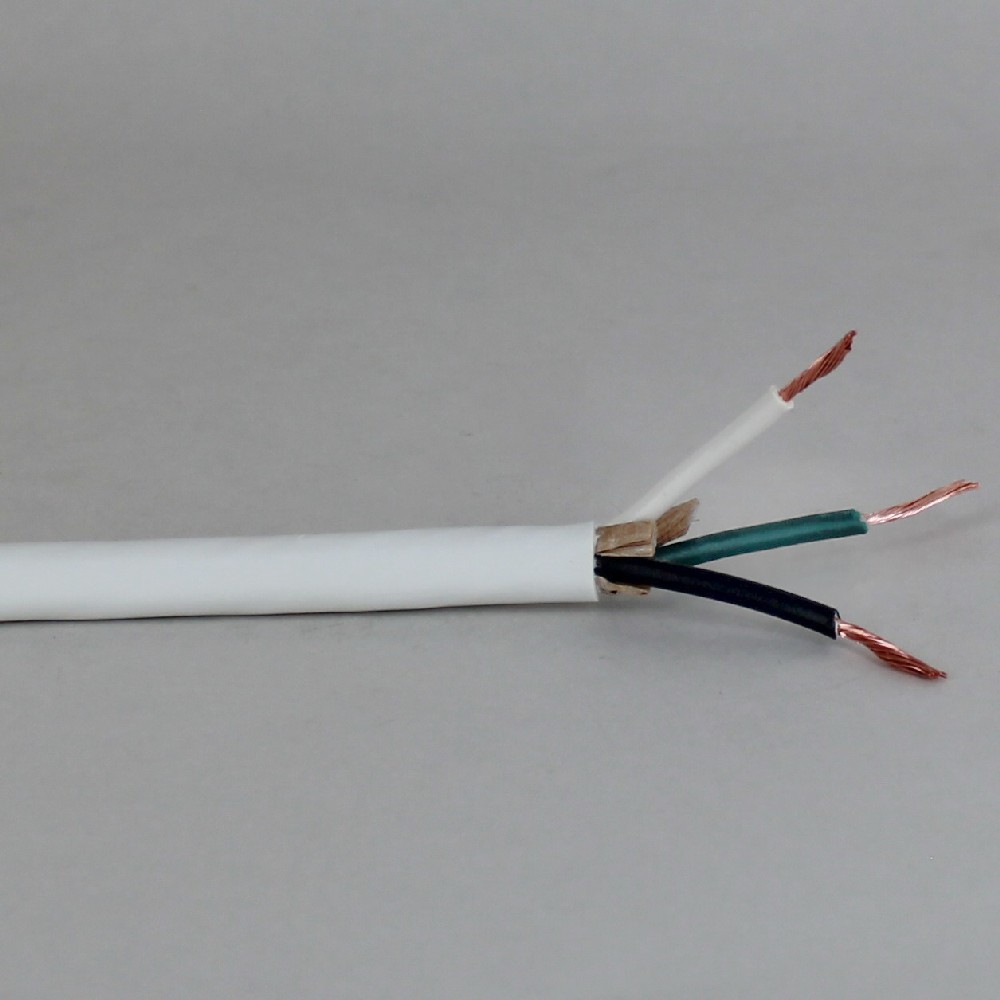
Step 4
Carefully cut away the excess outer sheath and the strips of paper insulation that are wrapped around the interior wires. Be very careful not to nick any of the wires.
Step 5
Use your screwdriver and loosen the two screws holding the female plug cap closed. Then, pry the female plug cap open to reveal the wire terminals. You should notice a green terminal, a silver terminal and a copper terminal. Use the screwdriver to loosen each screw on the terminals.
Step 6
Next, using wire strippers to strip about half an inch of insulation from each of the exposed wires in the wire.
Step 7
Take the green wire and tightly twist the exposed copper wire so that no strands are standing out. Then slip the green wire into the green terminal and tighten the screw down to secure it.
Step 8
Take the white wire and twist it in the same fashion and secure it under the silver terminal. The black wire gets secured under the copper terminal.
Step 9
Double-check each wire for any strands that may have escaped. If you notice any, loosen the terminal, re-twist the wire and re-secure it. Once you are sure there are no stray strands, close the female plug cap and tighten the two screws to complete the plug.
The cap should close securely over the black sheath of the cord. If the individual wires are exposed outside of the cord cap, then disassemble and shorten the wires. The cord cap should close OVER the outer sheath.
Step 10
Carefully follow Steps 3 through 9 with the other end of the cord and the male plug cap.
Once you are finished, plug the male end into a powered outlet and test the female end with a voltage tester. If the tester reads 120 volts, then you are good to go!
WARNING! Improper or incorrect wiring of an electrical device can cause bodily harm, and death. We recommend that you consult with a licensed electrician who is familiar with wiring.

Grand Brass Lamp Parts, LLC has served the Retail and Wholesale lamp parts, lighting parts, and chandelier parts industry since 1913 and also stocks lamp cord sets, including SPT and SVT sets as well as Twisted Fabric Covered Lamp Wire Power Cords.
Plus, to complement our electrical wire and lamp cord supplies, we also stock canopies and other lighting parts to cover all your lighting parts shopping needs.
You may also want to view our range of Lamp Sockets , Lamp dimmers, and lamp switches to help complete the job.
